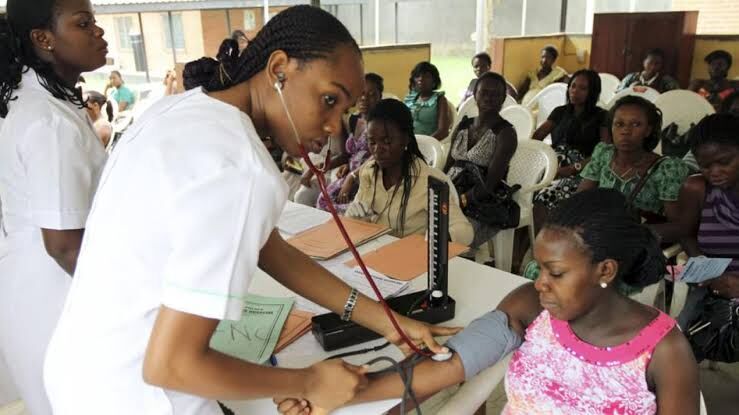
The ongoing maternal health crisis in Nigeria is linked to shortcomings in the Primary Healthcare System, placing the country among the 3% of the global population responsible for maternal and newborn deaths.
Insufficient funding for the health sector, a shortage of medical expertise at Primary Healthcare Centers (PHCs), gaps in healthcare coverage, substandard management and equipment in primary healthcare facilities, and limited health coverage are identified by experts as key factors exacerbating the crisis in the sector.
Addressing health journalists at a seminar focused on “Enhancing Healthcare Accessibility: The Significance of Primary Healthcare,” as reported by Daily Post, Dr. Salma Anas Ibrahim, the Special Adviser to Bola Tinubu on Health, emphasized that the issue of maternal and child mortality could be prevented through the more efficient redesign of Primary Healthcare Centers (PHCs).
She observed that a robust primary healthcare system could enhance the fundamental aspects of healthcare delivery nationwide, playing a crucial role in attaining the 2030 Sustainable Development Goals target of universal health coverage.
This is primarily due to its proximity to those in greatest need of care.
READ ALSO: Peter Obi Visits Remote Enugu Community, Donates N10 Million to Equip Health Centre
“The PHC is the fulcrum for a resilient health system and should be structured to deliver services that will support the attainment of UHC and guarantee health security,” she said.
Salma emphasized the Primary Healthcare Center (PHC) as the pivotal gateway to healthcare services within any community. She highlighted that approximately 80 percent of health concerns should be addressed at this level, ensuring the delivery of essential life-saving care to the population.
In her words, “As a gateway to accessing health services, it should be designed to fit the purpose for proper functioning and operations to be prepared for the needs of the community where it is located.
“It should be a hub of positive interaction that gives hope and relieves anxieties and distress to whoever visits there, whether as a caregiver or client/patient. It should be community-owned and led for optimal utilisation and sustainability of the PHC system along with the aspirations and potentials of the people and their developmental growth needs.
”The PHC should be linked to a secondary care facility for ease of referrals of cases requiring more expert attention.”
Salma cautioned that the rates of morbidity and mortality associated with maternal healthcare and pregnancy-related conditions were continuing to rise, posing a threat to the effectiveness of the country’s health service delivery system.
“In the integrated system that we are promoting, we aspire to ensure that as soon as a pregnant woman visits a healthcare facility, the quality and level of care she requires to deliver a healthy child is assured, including payment for services she would receive, ensuring that she is covered under one form of health insurance or the other,” she added.







Leave a Reply